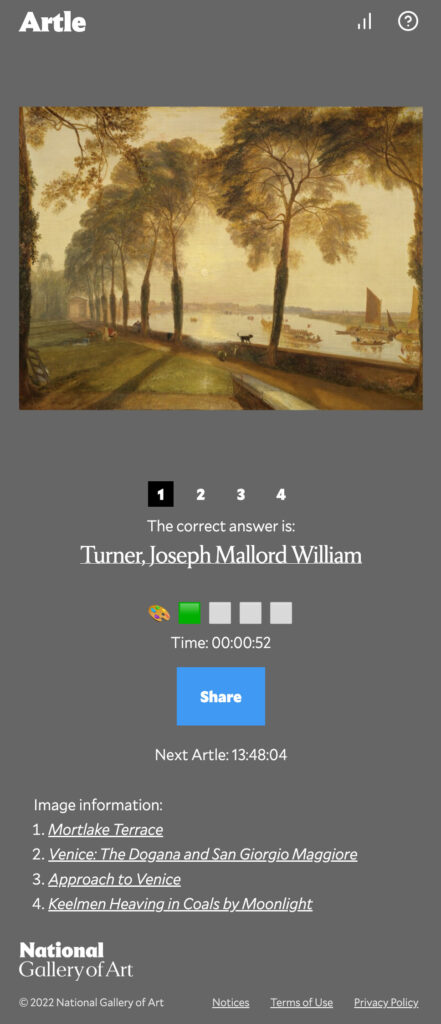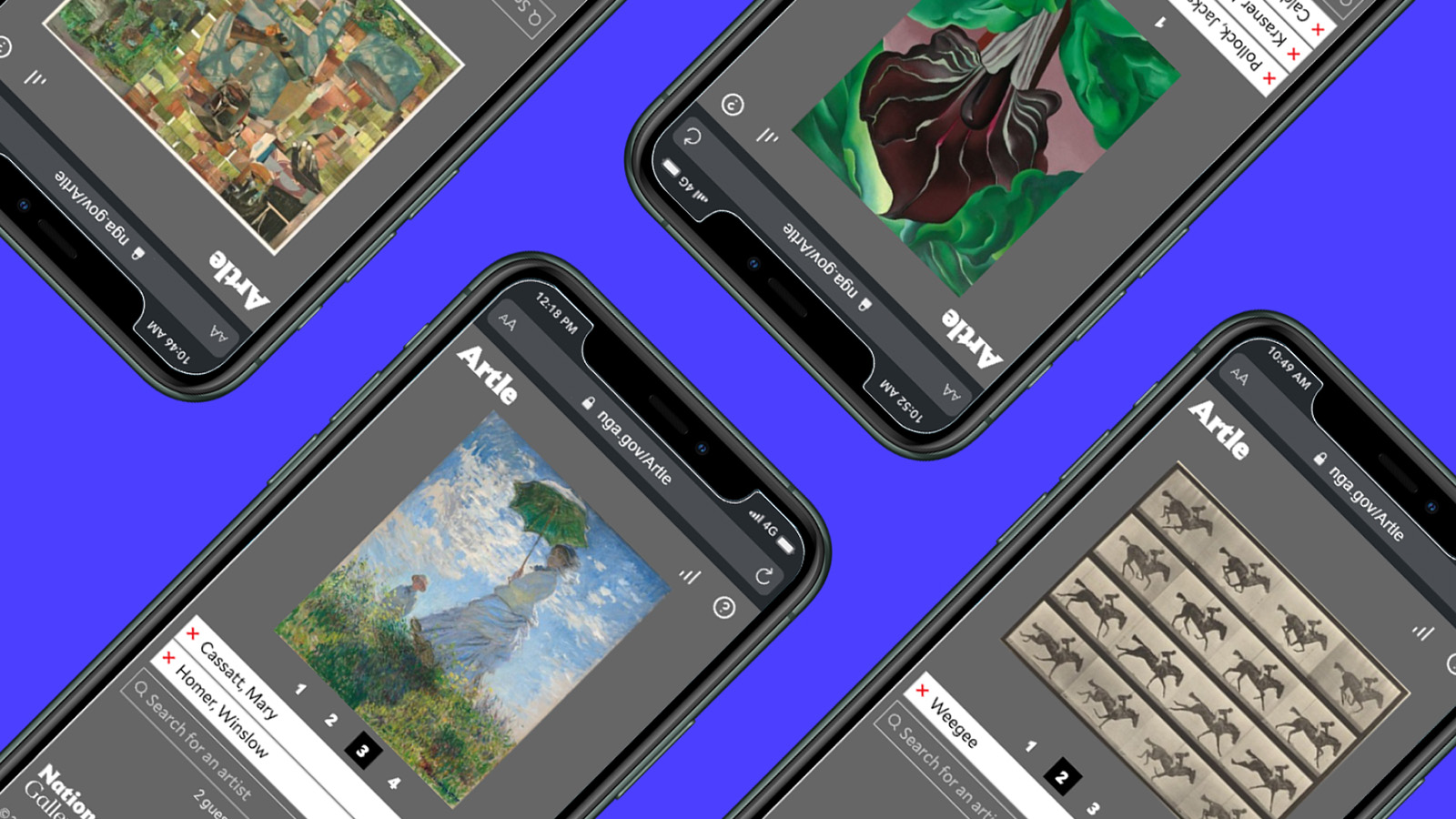The word on Wordle continues to travel. Since emerging late last year and enjoying an acquisition by the New York Times, the game reigns still in the world of daily word puzzles — its format drawing a repeat audience that checks in regularly to decode the day’s puzzle and to do so as part of a collective, Twitter-made experience. As mused elsewhere on this platform, Wordle’s gameplay is ripe for adaptation, particularly by cultural organizations looking to create engaging, social, and constantly refreshing digital experiences. And well, we didn’t have to wait long.
Behold Artle, an online art-based puzzle developed by the National Gallery of Art (NGA). Unveiled earlier this month, the game presents players with a daily updated set of four artworks, asking them to guess its artist — fun and accessible gameplay that nonetheless tests players’ knowledge of art, while urging discovery. “We hope that Artle inspires people to learn more about art,” says Steven Garbarino, NGA’s Senior Product Manager. “The goal is to encourage them to discover more about art, artists, and art history.”

“We hope that Artle inspires people to learn more about art,” says Steven Garbarino, NGA’s Senior Product Manager. Image: National Gallery of Art
To that end, a correct answer on Artle will point players toward information on the art and artist within the NGA’s digital collection, and further, invites them to share their solves on social media using spoiler-free colored boxes (as in: “🎨 🟥 🟩 ⬜ ⬜”). They’re functions that have effectively spurred and deepened engagement. According to Garbarino, NGA has seen a nearly 30 percent increase in site traffic from Artle users, with 25 percent of players continuing to navigate the rest of NGA’s website post-play. “Artle has been even more successful than we hoped!” he enthuses.
It’s a win built on simple gameplay as much as an institution-wide effort. The project was led by the NGA’s digital product and experience team, which sought to create a daily game that tapped into the museum’s collection. To do so, it first undertook rapid market research to assess the public’s appetite for such a game, before embarking on design and development. Testing took place in tandem, says Garbarino, with the team “completing multiple rounds of difficulty testing to find the right balance of user satisfaction and challenge.”

A correct answer on Artle links players to information about the art and artist, and invites them to share their results. Image: Artle
Along that same five-week timeline, the department also collaborated with internal and external team members. For one, it’s Rheema Ghazi of NGA’s education division who supplies the game with its daily art and artists, “leveraging her experience working with the public to identify what artworks will be most familiar, or most challenging, to players,” notes Gabarino. The launch of Artle, too, further looped in stakeholders from the museum’s communications, legal, content strategy, and curatorial teams.
The work, of course, doesn’t end with Artle’s roll-out. User testing continues in the name of ongoing improvements, while the content calls for constant updates. But it’s upkeep that’s not all that taxing, Gabarino says: “Once built, the maintenance is pretty light! While we work on feature enhancements, the only maintenance needed is to upload new game content, which is done weeks in advance.”
While a hit in terms of engagement numbers, Artle, just as vitally, meets the mission of the Washington, D.C. institution. As Gabarino points out, the NGA’s values rest on curiosity and continuous learning as it welcomes “all people to explore and experience art, creativity, and our shared humanity” — a purpose fulfilled by Artle’s invitation to interact with art daily. “In just a few minutes, you can discover a new artist and artworks, and start your day inspired,” he adds of the game. “It is also envisioned as a social activity: you can hop on Twitter and compare your results with your friends, or chat with your coworkers about today’s artist.”
At a moment when gamified, metaversal environments and programs are all the rage, it’s almost refreshing to watch an institution build a simple yet effective offering on the back of its existing resources, expertise, and collection. And as a bonus: Artle in turn works to solidify the NGA’s brand and digital presence — on a daily basis. It’s not Web3, but when a digital experience is this appealing and valuable an engagement tool, maybe that’s all it has to be.



